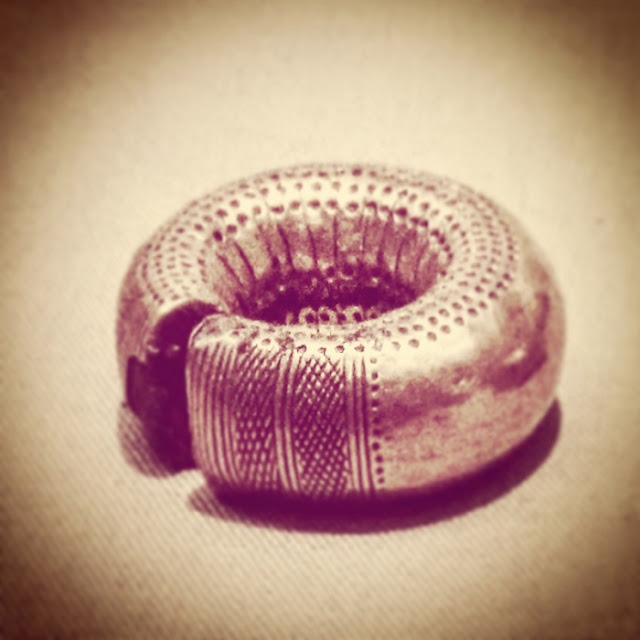Enigmatic Artefacts of the Irish Bronze Age
As regular readers of
this blog may be aware, I’ve been publishing a series of small posts based
around some photos I took on two trips to the National Museum of Ireland, in 2016 and 2017. My usual approach is to manipulate the image in Instagram and publish
the result to social media – I’m hardly Man Ray! Usually this goes fairly
well/unremarked. That is until I posted one of a pair of gold-covered lead objects
from Killyleagh, Co. Down. The Museum’s information card describes them as
Bullae (Single: Bulla) and dates them to the period from 800-700 BC. Another
archaeologist noted that the item more closely resembled ‘ring money’ and thus
developed a rather interesting discussion, taking in contributions from several
professional archaeologists and assorted non-specialists.
The crux of the matter
is that the term ‘Bulla’ is usually used to describe a more ‘bag-like’ object,
such as the famous example from the Bog of Allen [here | here].
Like the Killyleagh examples, this is a gold-covered lead object of uncertain
function. Although we’re not completely certain what they were used for, it has
not stopped archaeologists (and the antiquarians before them) from indulging in
heavy- to industrial-strength speculation. Bullae are frequently thought to
have been worn as pendants – whether for personal decoration, religious
identification, or as the insignia of power, it is impossible to say. The name ‘bulla’
derives from the lead (and occasionally, gold) seals attached to medieval Papal
documents. Ring-money appears to have taken its name because were thought to be
a form of proto-coinage. Well, the gold ones, at any rate … the gold-covered lead
ones, somewhat less so. Even after so much investigation, thought, and research,
opinion is still divided and no single postulated use is universally accepted. In
our Facebook discussion, the possibility of ‘ring-money’ being used as
temporary nose rings was discussed, as well as the possibility of their being used
to adorn animals … there was even one spirited suggestion that they fulfilled
the role of what is politely known as a ‘marital aid’ … though the individual
was (thankfully) silent on the exact method of utilisation.* Whatever the truth
of how these enigmatic items were used and the ideas they represented, there
can be no denying their beauty. While the academic arguments and speculations
will surely ebb and flow – with certain ideas holding sway before yielding to a
better theory – there is little doubt that the artefacts themselves will
continue to fascinate professionals and the public alike for some time to come.
* This is, of course, different to the Bronze
Age objects known as ‘crotals’.
These were clearly used as butt
plugs.
Note
This post was written some time ago and was intended for publication ahead of a post that became ever so slightly notorious. Between one thing and another, this post fell between the cracks, but I'm throwing it out there now for your delectation.
Note
This post was written some time ago and was intended for publication ahead of a post that became ever so slightly notorious. Between one thing and another, this post fell between the cracks, but I'm throwing it out there now for your delectation.





Comments
Post a Comment